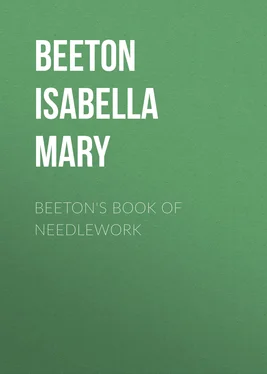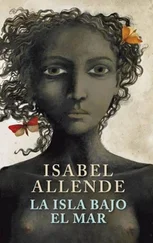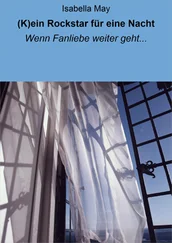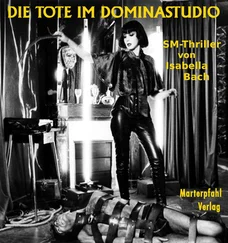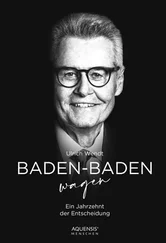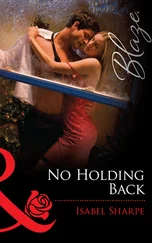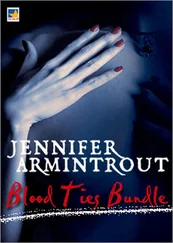Isabella Beeton - Beeton's Book of Needlework
Здесь есть возможность читать онлайн «Isabella Beeton - Beeton's Book of Needlework» — ознакомительный отрывок электронной книги совершенно бесплатно, а после прочтения отрывка купить полную версию. В некоторых случаях можно слушать аудио, скачать через торрент в формате fb2 и присутствует краткое содержание. Издательство: Иностранный паблик, Жанр: foreign_antique, foreign_home, Хобби и ремесла, на английском языке. Описание произведения, (предисловие) а так же отзывы посетителей доступны на портале библиотеки ЛибКат.
- Название:Beeton's Book of Needlework
- Автор:
- Издательство:Иностранный паблик
- Жанр:
- Год:неизвестен
- ISBN:нет данных
- Рейтинг книги:5 / 5. Голосов: 1
-
Избранное:Добавить в избранное
- Отзывы:
-
Ваша оценка:
- 100
- 1
- 2
- 3
- 4
- 5
Beeton's Book of Needlework: краткое содержание, описание и аннотация
Предлагаем к чтению аннотацию, описание, краткое содержание или предисловие (зависит от того, что написал сам автор книги «Beeton's Book of Needlework»). Если вы не нашли необходимую информацию о книге — напишите в комментариях, мы постараемся отыскать её.
Beeton's Book of Needlework — читать онлайн ознакомительный отрывок
Ниже представлен текст книги, разбитый по страницам. Система сохранения места последней прочитанной страницы, позволяет с удобством читать онлайн бесплатно книгу «Beeton's Book of Needlework», без необходимости каждый раз заново искать на чём Вы остановились. Поставьте закладку, и сможете в любой момент перейти на страницу, на которой закончили чтение.
Интервал:
Закладка:
28.– Collar in Tatting and Darned Netting .
Materials: Messrs. Walter Evans and Co.'s tatting cotton No. 40; tatting-pin No. 3; Messrs. Walter Evans and Co.'s French embroidery cotton No. 60; square netting.

The pattern is worked with very fine cotton; the netted grounding over a mesh measuring two-fifths of an inch round. The collar is ornamented round the outer edge with a tatted lace. Work a straight strip of netting for the grounding; begin with 2 stitches, work 18 rows backwards and forwards, increasing 1 at the end of each row, so that the last row has 19 holes; work 1 row without increasing; then continue to work with the same number of stitches, increasing 1 at the end of one row and decreasing 1 at the end of the other. When the strip is sufficiently long, work 1 row again without increasing or decreasing, and form the side by making 18 rows, decreasing 1 stitch at the end of each, cast off the 2 last stitches on 1 stitch without forming a new stitch on the needle. Trace the outline of the collar on the grounding with thick cotton, and begin to darn it from illustration. When the darning is completed work the tatted lace with the same cotton, as follows:–6 double, 1 short purl, alternately, 3 times 3 double, 1 purl, 6 double, draw up the stitch so as to form a scallop leaving one-fifth of an inch between the first and last stitch; work a second scallop at a short distance from the first, and so on; every scallop is fastened on to the preceding one after the first 3 double stitches. Work a row of double overcast stitch between the darned netting and the tatted lace; work this row over the cotton tracing, marking the outline of the collar on the grounding and over the cotton between the tatted scallops. Work also a row of double overcast round the neck part, gathering in the collar a little if necessary. Cut away the netting on the wrong side close to the row of overcast stitches.
29.– Mignardise and Tatting .
Materials: Messrs. Walter Evans and Co.'s tatting cotton No. 40; fine mignardise braid.
Patterns formed of mignardise and tatting are of quite new style, and look very pretty. The insertion is easy to work by the following process:–Make first a circle, as follows: 1 plain stitch, 2 double, 1 purl, 6 double, 1 purl, 2 double, 1 plain; fasten the cotton on to one side of the mignardise, at the distance of about five-eighths of an inch, by taking 2 loops of it together; work a second circle at a short distance from the first, and so on. When the strip of insertion is sufficiently long, work in the same manner on the other side of the mignardise. This kind of work is destined to become very popular, and nothing can be more light and graceful than the union of mignardise and tatting.
30.– Linen Bag for Cotton .
Materials: Fine linen, 6 inches square; Messrs. Walter Evans and Co.'s tatting cotton No. 40.
The bag seen in illustration No. 30 is meant to keep the cotton for working a couvrette; it consists of a round piece, measuring 6 inches across, which is hemmed all round, and trimmed with a tatted lace. It is drawn together at top.
31.– Tatting Insertion .
Materials: Messrs. Walter Evans and Co.'s cotton No. 30.
The insertion shown in illustration No. 31 is composed in two similar halves. Begin the first in the following way:–10 double, 1 purl, 3 double, 1 purl, 10 double, join the stitches into a circle, and work a second similar circle at a distance of one-third of an inch; instead of the 1st purl, draw the cotton through the 2nd purl of the first-worked circle; leave an interval of one-eighth of an inch, and repeat the two rounds till the insertion is sufficiently long. Then tat round the pieces of cotton which join the two rounds, work round the longest 10 double, and round the shortest 4 double, inserting the shuttle alternately once upwards and once downwards, but for the rest proceeding as in the common button-hole stitch. When the first half is completed, work the second in the same way, and fasten it on to the first with the purl.
32.– Tatting Insertion .
Materials: Messrs. Walter Evans and Co.'s cotton No. 30.
The pretty effect of the insertion shown in illustration No. 32 is obtained by means of longer and shorter purl. Work as follows:–Join 9 double into a circle, 1 long purl, 3 double, 1 long purl, 4 double *. After an interval of five-eighths of an inch, begin the large figure of the pattern: 2 double, 1 small purl, 2 double, draw the cotton through the last purl of the small circle, 2 double, drawn through the 1st purl of the same circle, 2 double, 1 small purl, 2 double, 1 long purl, 2 double, 1 small purl, 2 double, repeat 6 times more from *, and draw up. After an interval of five-eighths of an inch comes another small circle: 4 double, draw the cotton through the last purl of the large figure, 3 double, draw the cotton through the next long purl of the same figure, 2 double, 1 long purl, 3 double, 1 long purl, 4 double. Repeat the pattern for the length of insertion required. The threads which join the small circles are worked over with 7 double in the manner described above, only the cotton at the principal figure must be left loose the width of a straw, so as to imitate a long purl. Complete the insertion from illustration by tatting round the small circles of 16 double on the other side (but in the contrary direction), form no purl, but draw the cotton through the long purl of the large figure; the threads which join the 2 circles are likewise drawn through the middle long purl of the large figure; this thread is then tatted over with 7 double, like the opposite outer edge.
33.– Tatted Square or Diamond .
Materials: If for couvrettes, Messrs. Walter Evans and Co.'s tatting cotton No. 20, or crochet cotton No. 4; tatting-pin No. 3. For d'oyleys, tatting cotton No. 50; tatting-pin No. 2. For headdresses, tatting cotton No. 80; tatting-pin No. 2.
The square is composed first of nine 4-branched patterns, worked in 3 rows of 3 patterns each, and joined on one to the other with purl. Each pattern consists of 4 branches close to each other, and each branch consists of 7 double, 1 purl, 7 double; when the 4 branches of one pattern are completed, cut off the cotton, and fasten both ends together so as to form a small circle in the centre. Then work a second pattern, which is fastened on to the first and second branches of the first pattern, instead of working the purl stitch; work a third pattern, which is fastened in the same manner on to the second pattern. Then work 2 more rows exactly the same as can be seen in illustration.
*For the border of the square, fasten the cotton on the first purl of the first pattern, work 4 double, 13 purl divided by 2 double, 4 double, draw up the stitches close, fasten the cotton again on to the same purl of the first pattern *, and work the following scallop at a short distance:–4 double fastened on the last purl of the preceding circle, 10 purl divided by 2 double, 4 double, draw up the stitch, leaving an interval of two-fifths of an inch between the first and the last; fasten the cotton on to the next purl which joins two patterns, repeat twice more from *, and continue to repeat from *.
34.– Tatted Rosette .
Materials: Messrs. Walter Evans and Co.'s tatting cotton No. 40, or crochet cotton No. 60.
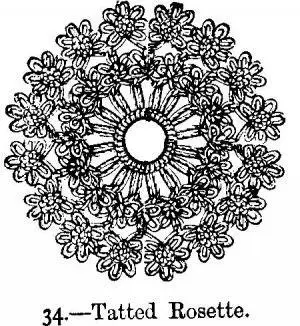
This rosette is very pretty for trimming lingeries ; it is worked with very fine crochet or tatting cotton. Begin in the centre and work one circle: 16 times alternately 2 double, 1 purl, then 1 purled stitch. Fasten the cotton on to the first purl and work the 2nd round: 1 small circle, consisting of 6 double divided by 1 purl. Fasten the cotton on to the next purl of the middle circle, and repeat in rounds. 3rd round: Fasten the cotton on the middle purl of the first circle of the preceding round, * work at a short distance 8 double divided by 1 purl, join the stitches into a circle, fasten the cotton at the same distance on to the middle purl of the next circle of the preceding round, and repeat in rounds from *, after which the cotton is fastened off.
Читать дальшеИнтервал:
Закладка:
Похожие книги на «Beeton's Book of Needlework»
Представляем Вашему вниманию похожие книги на «Beeton's Book of Needlework» списком для выбора. Мы отобрали схожую по названию и смыслу литературу в надежде предоставить читателям больше вариантов отыскать новые, интересные, ещё непрочитанные произведения.
Обсуждение, отзывы о книге «Beeton's Book of Needlework» и просто собственные мнения читателей. Оставьте ваши комментарии, напишите, что Вы думаете о произведении, его смысле или главных героях. Укажите что конкретно понравилось, а что нет, и почему Вы так считаете.
